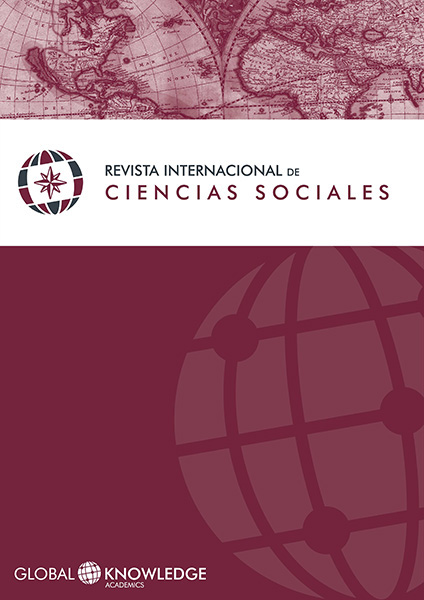Cultural Tourism in a World Heritage Site: the case of the city of San Cristobal de La Laguna (Tenerife, Spain)
DOI:
https://doi.org/10.37467/gka-revsocial.v3.1137Keywords:
Cultural Tourist, World Heritage City, San Cristóbal de La Laguna, TenerifeAbstract
The island of Tenerife is a mature sun and beach destination, visited in 2013 by more than 4.600.000 tourists. The intent of diversifying supply and offer services and value-added products is a primary objective of the tourism sector and local governments. Within the policy of product diversification, cultural tourism plays a central role. The present case, of the city of San Cristóbal de La Laguna, is a paradigmatic case. This is because it is a city declared World Heritage Site by UNESCO (1999) and is located in an enclave of mass tourism of sun and beach. Through a study by the University of La Laguna, we detail a survey of tourists, realized at the end of the visit to that city. The objective of the research was to determine the sociodemographic characteristics of the tourists, their behavior and their main motivations and perceptions during the visit.
Downloads
Global Statistics ℹ️
|
593
Views
|
409
Downloads
|
|
1002
Total
|
|
References
Corbetta, Piergiorgio. (2010). Metodología y técnicas de investigación social . Madrid: MC Graw Hill.
Crompton, John. (1979). “Motivations for Pleasure Vacation”. Annals of Tourism Research , 6(4), 408-424. DOI: https://doi.org/10.1016/0160-7383(79)90004-5
Dann, Ross e Iso, Ahola. (1981) “Sightseeing Tourists’ Motivation and Satisfaction”. Annals of Tourism Research , 18, 226-237. DOI: https://doi.org/10.1016/0160-7383(91)90006-W
Esteban, Agueda; Mondéjar, Juan y Cordente, María. (2009). “Segmentación de turistas en una ciudad patrimonio de la humanidad”. En Gómez, M.A. y Mondéjar, J.A. (coord.), Turismo cultural en ciudades patrimonio de la humanidad . Ediciones de la Universidad de Castilla- La Mancha, Cuenca.
Fernández de Paz, Esther. (2006). “De tesoro a recurso turístico: el cambiante significado del patrimonio cultural”. Pasos, Revista de Turismo y Patrimonio Cultural , 4(1), 1-12. DOI: https://doi.org/10.25145/j.pasos.2006.04.001
Giner, Salvador; Lamo de Espinosa, Emilio y Torres, Cristóbal. (2006). Diccionario de Sociología. Madrid: Alianza Editorial.
Martín, Beatriz. (2003). “Nuevos turistas en busca de un nuevo producto: El patrimonio cultural”. Pasos, Revista de Turismo y Patrimonio Cultural , 1(2), 155-160. DOI: https://doi.org/10.25145/j.pasos.2003.01.015
Prats, Llorenç y Santana, Agustín. (2005). “Reflexiones libérrimas sobre patrimonio, turismo y sus confusas relaciones”. En: Santana, Agustín y Prats, Llorenç (eds.), El encuentro del turismo con el patrimonio cultural: concepciones teóricas y modelos de aplicación (pp. 9-25), Fundación El Monte/FAAEE7ASANA.
Senabre, David. (2007). “¿Es cultura el turismo cultural?” Revista Foro de Educación , 9, 71-79. Web-pages (accesos enero 2014):
www.gobiernodecanarias.org/istac (Instituto Canario de Estadística)
www.iet.tourspain.es (Instituto de Estudios Turísticos)
www.ine.es (Instituto Nacional de Estadística)
www.webtenerife.com (Cabildo de Tenerife-Turismo)
Downloads
Published
How to Cite
Issue
Section
License
Those authors who publish in this journal accept the following terms:
-
Authors retain copyright.
-
Authors transfer to the journal the right of first publication. The journal also owns the publishing rights.
-
All published contents are governed by an Attribution-NoDerivatives 4.0 International License.
Access the informative version and legal text of the license. By virtue of this, third parties are allowed to use what is published as long as they mention the authorship of the work and the first publication in this journal. If you transform the material, you may not distribute the modified work. -
Authors may make other independent and additional contractual arrangements for non-exclusive distribution of the version of the article published in this journal (e.g., inclusion in an institutional repository or publication in a book) as long as they clearly indicate that the work was first published in this journal.
- Authors are allowed and recommended to publish their work on the Internet (for example on institutional and personal websites), following the publication of, and referencing the journal, as this could lead to constructive exchanges and a more extensive and quick circulation of published works (see The Effect of Open Access).













